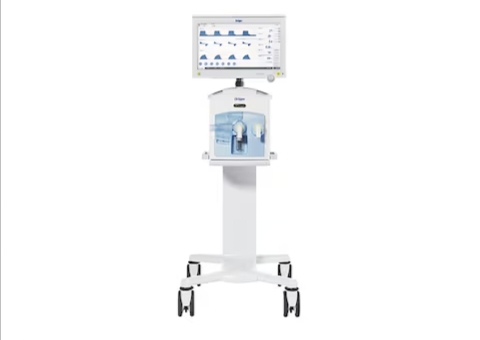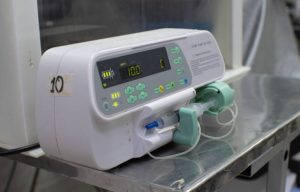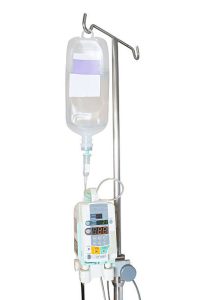
What is a Ventilator Machine?
A ventilator is a medical device designed to assist or replace the spontaneous breathing process in patients who cannot breathe adequately on their own. It delivers oxygen into the lungs and removes carbon dioxide from the body, helping to maintain proper gas exchange in critically ill patients. Ventilators are commonly used in ICUs, operating rooms, and during patient transport.
Brand Names, Prices, and Value for Money (US and India)
1. Philips (V60/V680 Series)
- Price in the US: $15,000 – $30,000
- Price in India: ₹10 lakhs – ₹20 lakhs
- Value for Money: Good for hospitals that need both invasive and non-invasive ventilation. Its ease of use and versatility make it a great option.
2. Medtronic (Puritan Bennett 980)
- Price in the US: $20,000 – $40,000
- Price in India: ₹12 lakhs – ₹30 lakhs
- Value for Money: Ideal for advanced ICUs with its wide range of modes, but more expensive and requires trained staff.
3. Dräger (Evita V600)
- Price in the US: $25,000 – $45,000
- Price in India: ₹15 lakhs – ₹35 lakhs
- Value for Money: Expensive but reliable for long-term critical care with advanced monitoring and lung protection features.
4. GE Healthcare (Carestation Series)
- Price in the US: $15,000 – $35,000
- Price in India: ₹10 lakhs – ₹25 lakhs
- Value for Money: Often used in operating rooms due to anesthesia integration, offering robust performance for surgical patients.
5. Hamilton Medical (G5 Ventilator)
- Price in the US: $20,000 – $45,000
- Price in India: ₹12 lakhs – ₹30 lakhs
- Value for Money: Premium for ICUs due to its smart ventilation and AI-driven technology, offering exceptional support for complex cases.
6. Mindray (SV600)
- Price in the US: $10,000 – $20,000
- Price in India: ₹8 lakhs – ₹15 lakhs
- Value for Money: An affordable solution for hospitals looking for basic but reliable functionality, making it ideal for smaller facilities.
How to Use a Ventilator Machine
- Initial Setup:
- Power up and calibrate the machine.
- Connect the ventilator tubing to the patient’s airway (e.g., endotracheal tube or tracheostomy).
- Setting Parameters:
- Select the ventilation mode (pressure control, volume control, BiPAP, or CPAP).
- Adjust respiratory rate, tidal volume, PEEP, and oxygen levels based on patient needs.
- Monitoring:
- Continuously monitor oxygen saturation (SpO2), CO2 levels, and lung compliance.
- Adjust ventilator settings as needed based on patient response.
- Weaning:
- When the patient begins to recover, gradually reduce ventilator support to allow the patient to breathe independently.
Features and Specifications
- Ventilation Modes: Volume Control, Pressure Control, Synchronized Intermittent Mandatory Ventilation (SIMV), BiPAP, CPAP.
- Monitoring: Real-time monitoring of volume, pressure, oxygen, and CO2 levels.
- Alarms: Built-in safety alarms for apnea, disconnection, low oxygen levels, and abnormal pressure levels.
- Humidification: Heated humidifiers or heat and moisture exchanger (HME) filters.
- Portability: Some ventilators offer battery backup for patient transport.
Performance
- Accuracy: High-end models offer precise control of tidal volumes and sensitive trigger systems that respond to patient breathing.
- Advanced Technology: AI-driven ventilators, like the Hamilton G5, can automatically adjust settings to adapt to patient needs.
- Reliability: Premium brands like Dräger and Medtronic are built for long-term use in intensive care environments.
Safety
- Alarms: Critical alarms for apnea, disconnection, and pressure imbalance help protect patients.
- Lung Protection: Many models feature lung-protective strategies like low tidal volume to prevent injury from overventilation.
- Backup Power: Vital for ensuring continuous operation in case of power outages.
Pros and Cons
Pros:
- Life-saving: Essential for patients with respiratory failure.
- Multiple Modes: Wide variety of modes for different clinical needs.
- Real-Time Monitoring: Continuous updates on patient vitals help clinicians make informed decisions.
Cons:
- Expensive: High upfront and maintenance costs, particularly for premium models.
- Complexity: Requires trained medical staff to operate effectively.
- Risk of Ventilator-Associated Pneumonia (VAP): Prolonged use increases infection risk.
Comparison with Competitors
- Philips V680 vs. Medtronic PB980:
- Philips V680: Offers non-invasive options with easy usability, making it great for both short-term and long-term use.
- Medtronic PB980: Advanced ICU modes, suited for highly critical cases, though more complex and expensive.
- Dräger Evita V600 vs. Hamilton G5:
- Dräger Evita V600: Provides excellent safety features and durability for critical care units.
- Hamilton G5: Features AI-driven ventilation adjustments, ideal for dynamic critical care environments.
- Mindray SV600 vs. GE Carestation:
- Mindray SV600: Affordable and reliable for basic hospital setups.
- GE Carestation: Offers more advanced monitoring and is often integrated with anesthesia systems, making it preferable for surgical use.
User Feedback/Testimonials
- Philips V680: Praised for its versatility and ease of use in both invasive and non-invasive settings. Users find the interface intuitive and helpful in emergency situations.
- Medtronic PB980: Users appreciate its advanced features, though they note that it requires extensive training to use effectively.
- Dräger Evita V600: Highly regarded for its robustness and safety features, with users citing its reliability in long-term critical care environments.
- Hamilton G5: Clinicians love its AI capabilities, which help reduce the need for constant manual adjustments.
- Mindray SV600: Popular for its affordability and reliable performance, though some users note it lacks the high-end features found in more expensive models.
Disclaimer
This content is provided for informational purposes only and is not a substitute for professional medical advice or instruction. Ventilator machine prices can vary based on model specifications, location, and healthcare provider needs. Proper training is essential for operating a ventilator, and healthcare professionals should always follow manufacturer guidelines and safety protocols. User feedback and testimonials may vary based on individual experiences, and the value of ventilators may differ depending on the clinical setting. Always consult certified medical personnel when choosing or operating medical equipment.








